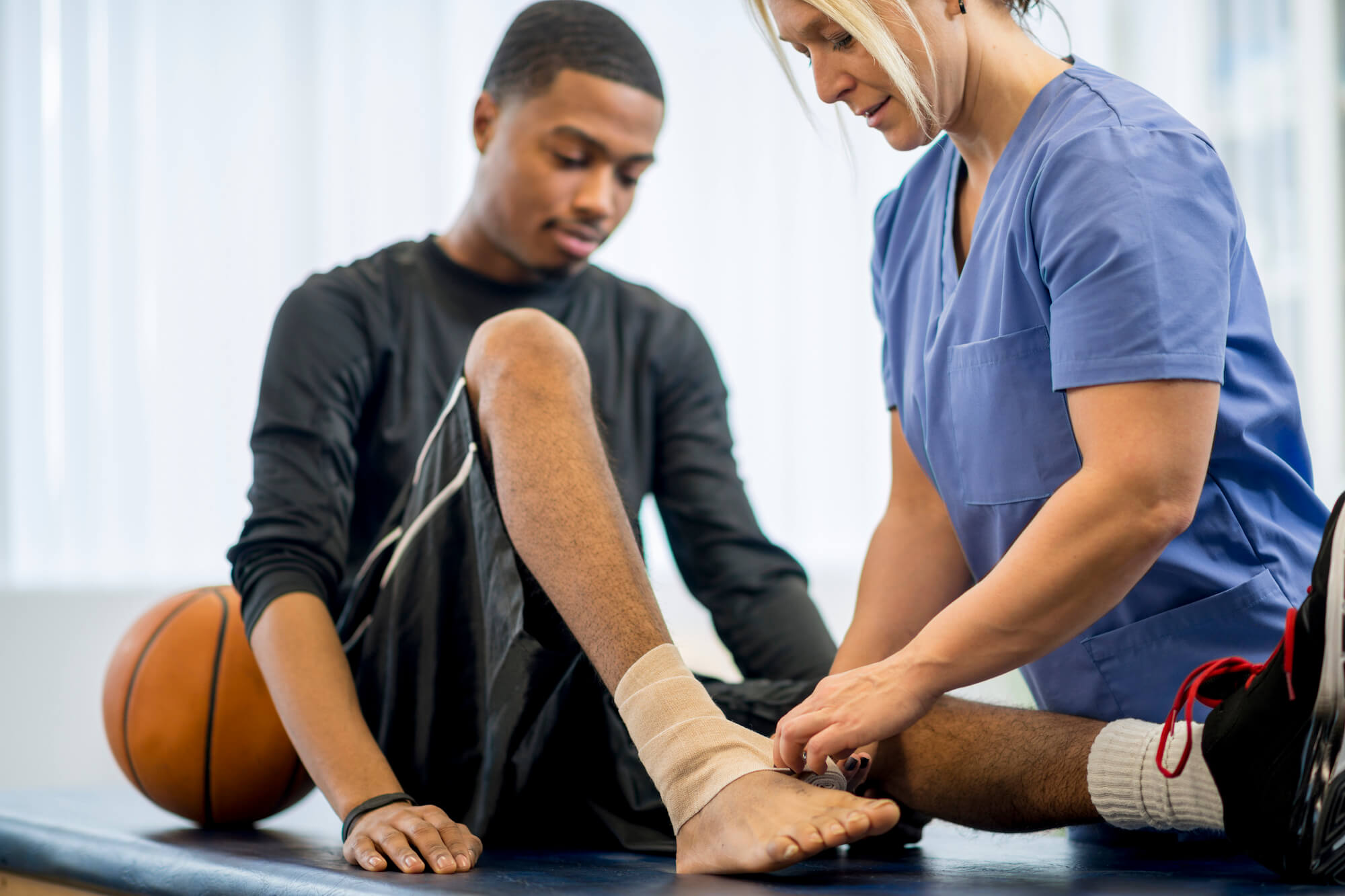As an athlete, one of my greatest fears is succumbing to an injury that will prevent me from doing the sport I love. In the winter athletics season, I pulled a muscle during a track meet, and had to sit out for several practices. I could barely walk! I was waiting anxiously and worrying about my next meet. Luckily, I got back to running in about a week. As I was recovering, I read about injury prevention and recovery. A few things caught my attention. Research has indicated that between 14-32% of competitive athletes are forced to retire early each year due to a career-ending injury.
As explained by Carolyn Smith, the Head Athletic Trainer at Fieldston, “Unfortunately, there is no sure-fire way to totally prevent injury. However, there are things that you can do to help. Preventative rehabilitation, or “pre-hab”, is a method used to condition and strengthen the body in preparation for surgery, ultimately speeding up the recovery process after surgery. This concept of “pre-hab”, is a great way to help manage and prevent possible injuries, even if an athlete is not preparing for surgery. Working on strength and flexibility helps the body move properly which can lessen the chance of injury, specifically overuse/chronic injury. Unfortunately, “freak-accidents” happen and not all acute injuries can be prevented. Overall, working on strength, flexibility, proper movement patterns and getting enough sleep and recovery is the best way to go!”
The human body has great regenerative and repair properties, to a certain extent. Tissue repair is a linear process. To summarize the process concisely, it consists of three phases: inflammation, proliferation and remodeling. In acute wounds, these three phases occur readily. In severe and chronic wounds, the last two phases, also called the anti-inflammatory phases, do not occur readily. As a result, the wound remains in the inflammatory phase, which does not signal tissue regeneration. A stiff scar tissue forms over the area, resulting in functional impairment, severe disability, and cosmetic deformities.
A group of scientists believe they may have a solution. Researchers from the University of Pittsburgh, Carnegie Mellon University, Northwestern University, University of Vermont, University of Wisconsin and Walter Reed National Military Medical Center have collaborated to create a device to regrow muscle tissue. This device would speed up the initial inflammatory process in larger wounds, and would kick larger wounds into anti-inflammatory phases weeks earlier than scheduled. In addition, the device would monitor molecular signals at each stage of healing, and cue for the production of specific molecules to help speed up the process. The device would repeat this cycle until the muscle fully rebuilds itself.
Science and technology have touched upon and advanced almost every aspect of our lives. Sports is no exception.
Carolyn further explains, “There are a lot of biomedical advancements out there that help to prevent chance of injury and aid in recovery as well. Many of these sensors/ medical devices are still going through testing and trials. And there is just SO MUCH information available. It is important to understand the results of those studies to know what works for each individual and setting. What works for some might not work for all! One of the big fields of study for advanced technology in the biomedical field is that of concussion prevention. There are a few devices out there that are working to help monitor how loads and impact exposure affect injury and physiological function.”
In recent years, wearable sensors are becoming popular for their functions of optimizing sleep, activities, assisting recovery and managing stress. Artificial Intelligence has been used to predict and understand the structure of almost every protein made by the human body, which could help supercharge new treatment and recovery plans. There have been more and more partnerships formed between sport teams and hospital researchers. With this much biomedical engineering development happening and applications applied in the sport field, I predict that the fear of injury may soon exist in our memory only.
Suggested Reading:
https://www.bbc.com/news/science-environment-57929095
https://www.massgeneralbrigham.org/newsroom/press-releases/mass-general-brigham-announces-new-partnership-new-england-patriots-and-new






